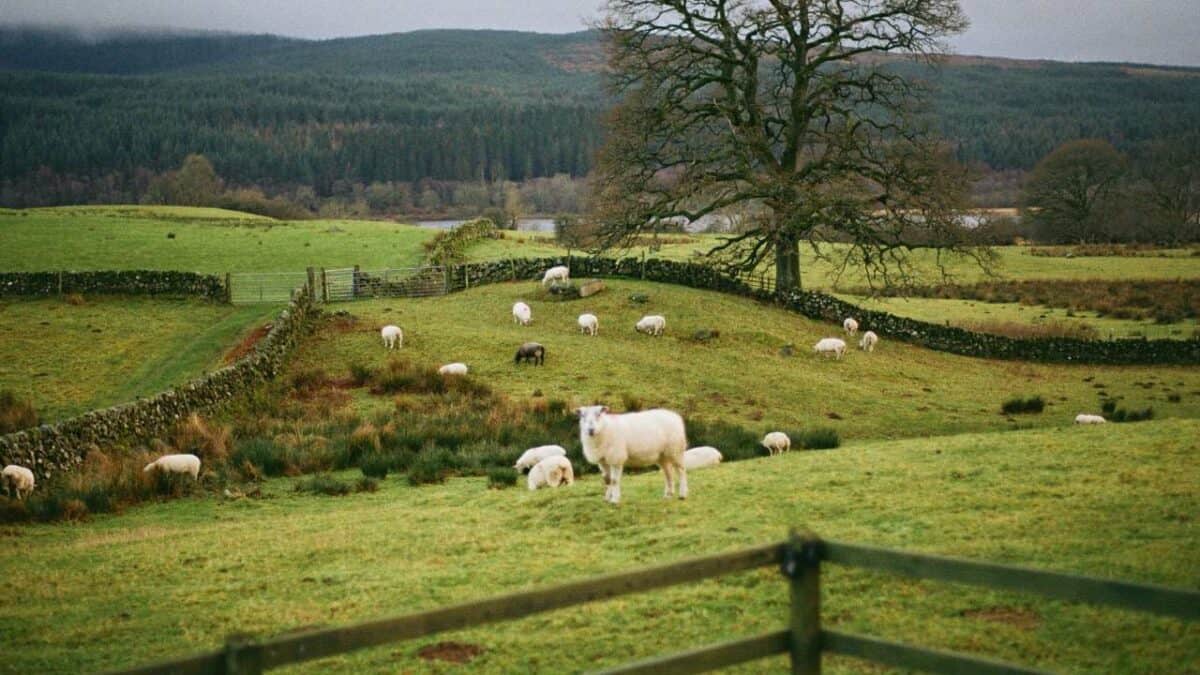Although it covers nearly 2,500 square miles, the council area of Dumfries and Galloway is an often-overlooked part of Scotland.
However, it’s one of the country’s most picturesque regions and home to Galloway Forest Park, a remote, unspoilt natural gem abundant with tranquil woodlands, rolling hills, and crystal-clear lochs. Moreover, Galloway Forest Park is one of Europe’s best places for stargazing: the stellar show you can see here is unforgettable in every sense of that term.
Whether you prefer sleeping in a motorhome or tent camping, this gorgeous region has many excellent wild camping spots. Here’s everything you need to know about the best ones:
Is Wild Camping in Dumfries & Galloway Forest Park Legal?
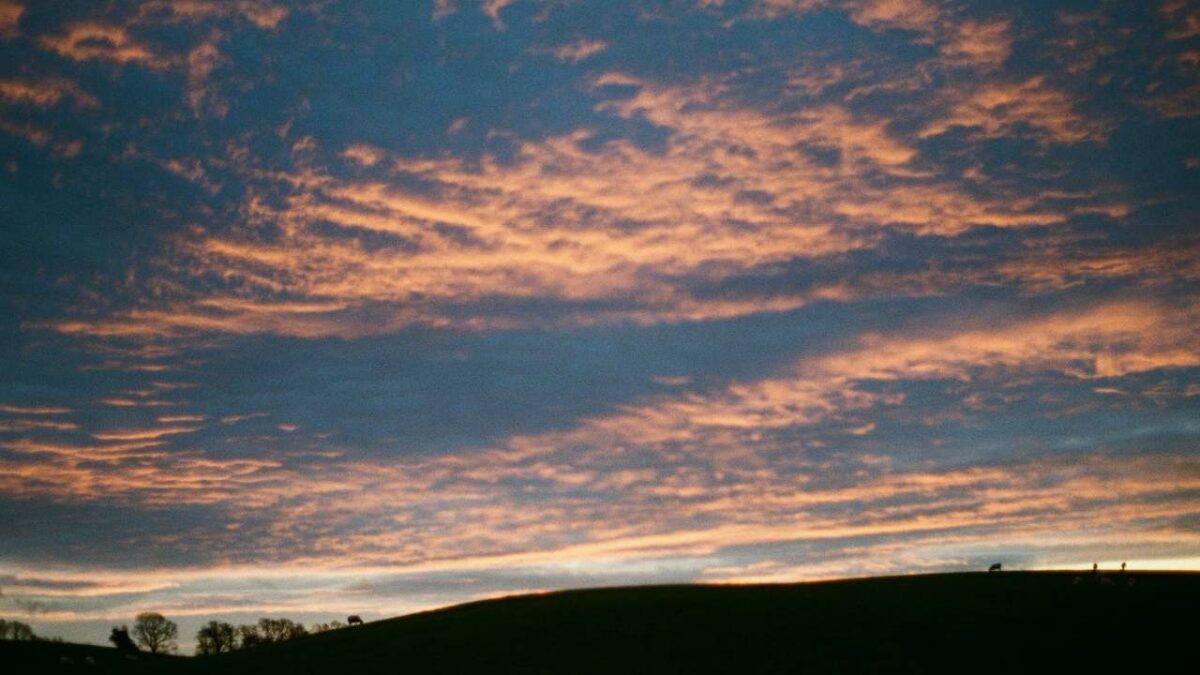
The short answer to this question is yes, it is. The longer answer is yes, but only as long as you follow the rules outlined in the Scottish Outdoor Access Code.
In short, those wishing to wild camp in Scotland must be responsible, mindful of others, and, above all, clean up after themselves. In practice, this means:
- Keep your numbers small and stay in one spot only for three nights at a time.
- Take all litter with you, including food scraps. Some organic matter, like banana skins, can take years to biodegrade.
- While some places allow open fires, you should refrain from making campfires. If you must create one, ensure it’s fully extinguished before leaving.
- Never camp in fields where there are farm animals or crops. Stay well away from roads and buildings.
- When you need to go to the toilet, take a trowel and “do the job” at least 30 metres from the water and bury the waste. Don’t bury the toilet paper: put it into your trash bag and take it away.
- Avoid removing vegetation and boulders or digging trenches to accommodate your tent. Find a dry, flat area, and remove all traces of your camping before departing.
Map of Wild Camping Areas in Dumfries & Galloway Park
Click on the map icons for more information about each wild camping area.
Best Wild Camping Spots in Dumfries & Galloway Park
Loch Doon, Western Shore
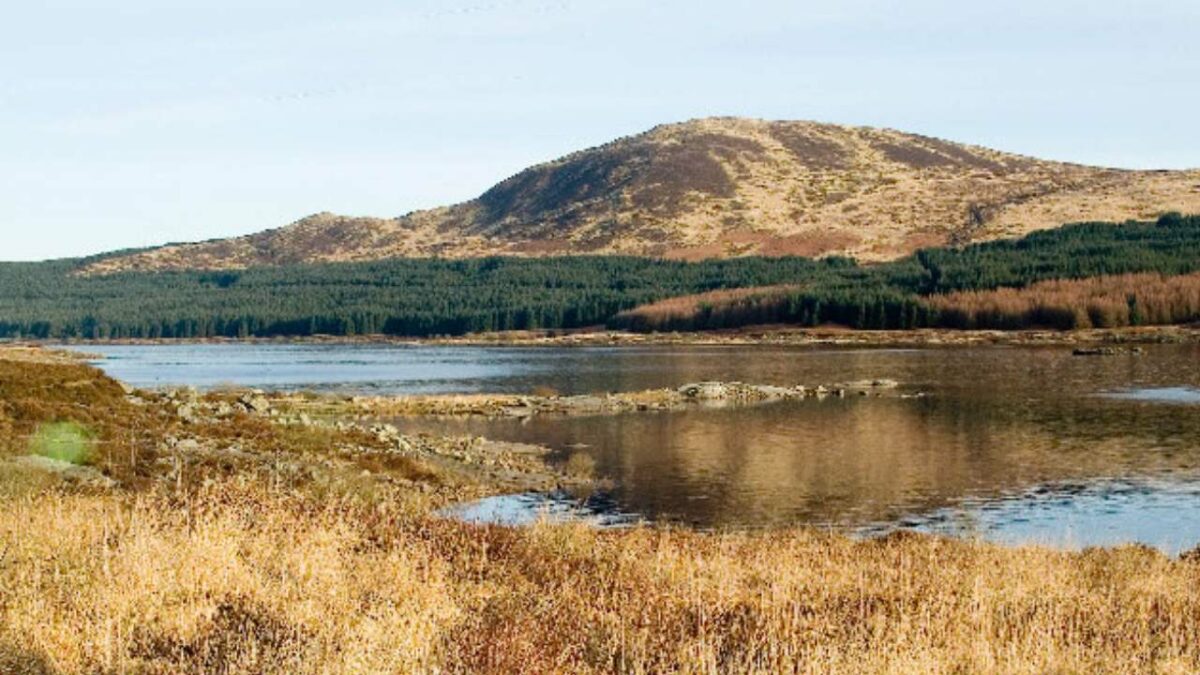
Located in the district of Carrick, Loch Doon is a large freshwater lake on the eastern border of the Galloway Park. It is surrounded by forest plantations and used as a reservoir for power generation – its water level was raised some 27 feet by the construction of a dam in the 1930s.
Nevertheless, the natural beauty of this lake cannot be denied – it’s an excellent wild camping destination. There are terrific camping spots on all sides of the lake, but the best one can be found on its western shore, some 50 miles west of Dumfries (via A712 and A713).
As you approach the loch from the south, you will encounter a car park with two bays between Starr and Craigmaloch (right where Carrick Lane flows into the lake). Both of the park’s bays are pretty spacious. One of the bays is on the slope of the hill and has a slight angle, while the other features flat ground and scenic lake views.
The whole area feels very secluded, with the sound of the stream flowing into the loch and tall trees on all sides. Moreover, it is easily accessible by campervans, RVs, and motorhomes. A word of advice – the sunset here is breathtaking, so try to arrive before the golden hour.
Loch Doon, Eastern Shore
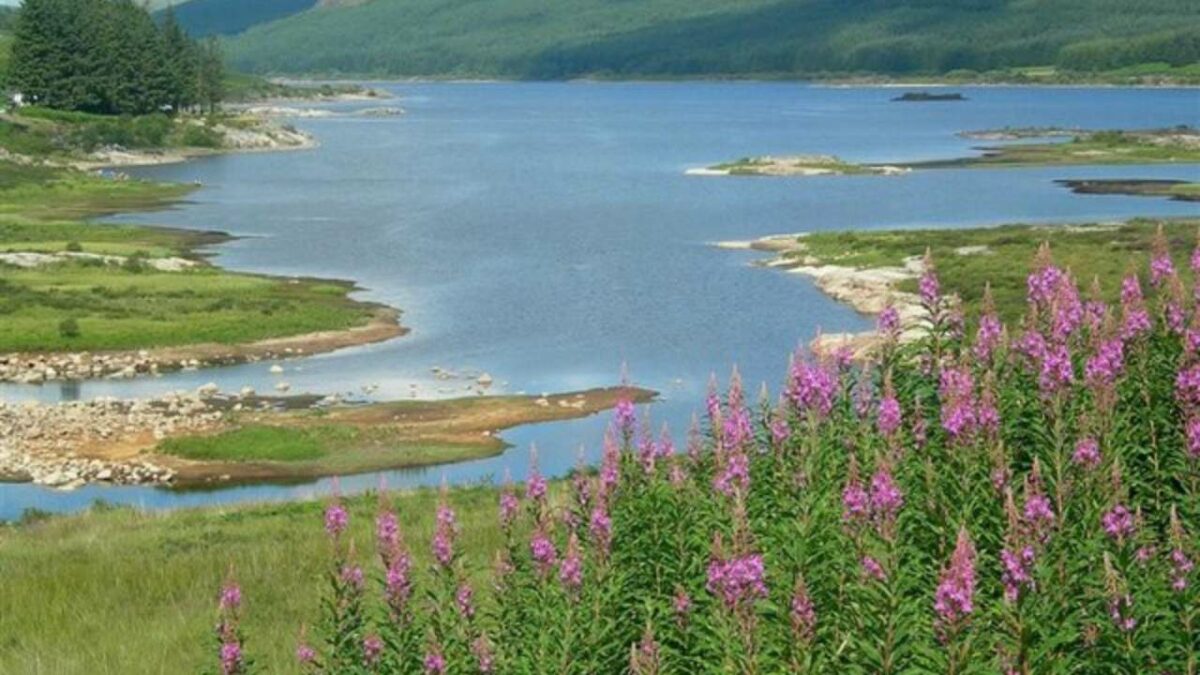
The next wild camping destination is located opposite the one described above, on the eastern shore of Loch Doon. Unlike the parking lot at the estuary of Carrick Lane, this one is unsuitable for motorhomes: it can be accessed only by vans.
Besides the fact that all types of vehicles cannot drive on the road leading up to this place, there is another potential issue – the gate at its entrance, which is sometimes open, and sometimes isn’t. While you can certainly drive through if the gate is open, you’ll be at risk of getting locked in.
Once you’re in the area shown on the map, you’ll notice an abundance of road laybys where you can park your vehicle. You’ll be in absolute isolation here, completely surrounded by wilderness and having plenty of things to explore – dense woodlands, streams, waterfalls, and the entire eastern shorefront of Loch Doon.
An important thing to mention here is that you must be careful when swimming in the lake. Due to its powerful currents and freezing water, the loch has seen more than one accidental drowning.
Clatteringshaws Loch
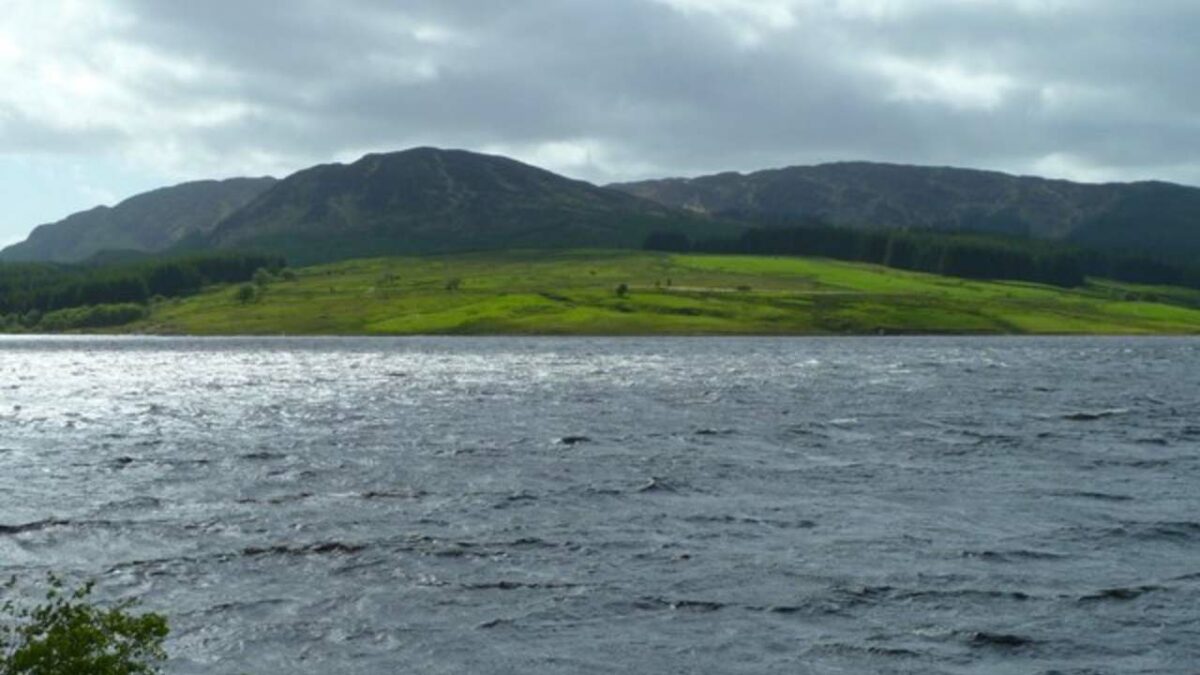
This freshwater reservoir can be found in the southern half of Galloway Forest Park, right next to A712. Due to its proximity to the Queen’s Way – which is the nickname of A712 – it is one of the most accessible lakes in Galloway and Dumfries.
A haven for waterbirds, Clatteringshaws Loch is an exceptionally tranquil place and one of the best stargazing destinations in the whole country. A captivating stellar show is guaranteed every night due to the loch’s location in the darkest part of the park. And on a clear day, those camping here can see all the way to the highest hill in the region – Merrick.
The spot shown on the map is secluded all around with trees and more suited to campervans. While staying here, you can visit the café and access the toilets at the nearby visitor centre. There is also a small gift shop with a collection of unique souvenirs.
Use the opportunity to walk up Bennan and savour spectacular views of the rolling countryside. Another excellent option is hiking to Lilie’s Loch, a tiny lake two miles to the southwest. Alive with dragonflies and water lilies, it’s an ideal spot for a quiet picnic in the wild.
Carrick Forest Drive
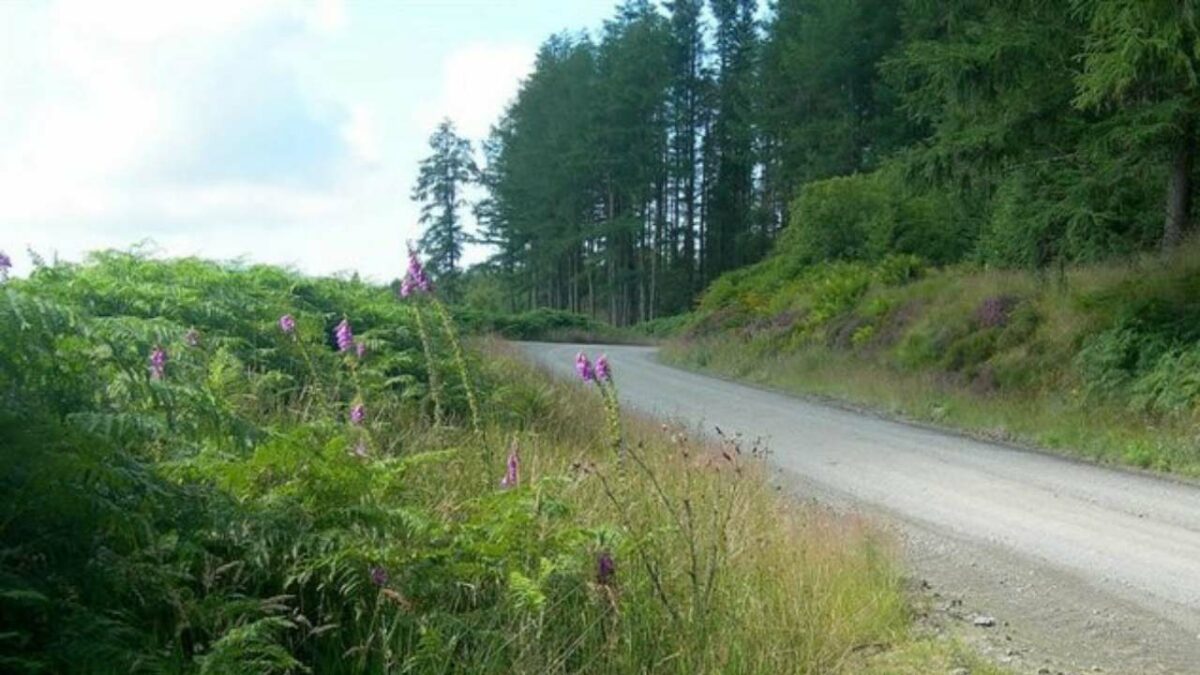
Carrick Forest Drive is a two-way woodland road connecting Stinchar Bridge and Loch Doon in the park’s northern half. Camping along this 6-mile route means experiencing Galloway’s wilderness at its best – the road is as scenic as this part of the Forest Park gets.
Even though there are several car parks along the route, the Drive will remain closed to campervans, RVs, and motorhomes in 2023. Don’t let this discourage you – it is still open to cyclists and walkers who can easily find top-notch wild camping spots and picnic areas everywhere along the road.
The spot marked on the map is the best out of all camping locations on Carrick Forest Drive. Situated on a small peninsula overlooking Loch Riecawr, it is secluded among the trees and provides excellent views over the lake and the surrounding mountains. Those planning to stay here between May and September should pack a quality bug repellent – don’t let the (unavoidable) midges ruin your experience.
One of the best places to visit while camping along Carrick Forest Drive is near the road’s eastern entrance – the ruins of Loch Doon Castle. There are also a few hiking trails to othr nearby lakes, such as Loch Macaterick and Loch Bradan.
Yet, if you’re yearning for a different kind of adventure closer to Scotland’s urban heartbeat, wild camping spots near Glasgow might just be the ticket. While Carrick Forest Drive offers an untouched woodland experience, the outskirts of Glasgow present a unique blend of city vibrancy and natural tranquillity. It’s a compelling choice for those wanting to savour both the wilderness of Galloway and the rhythm of city life.
Loch Trool
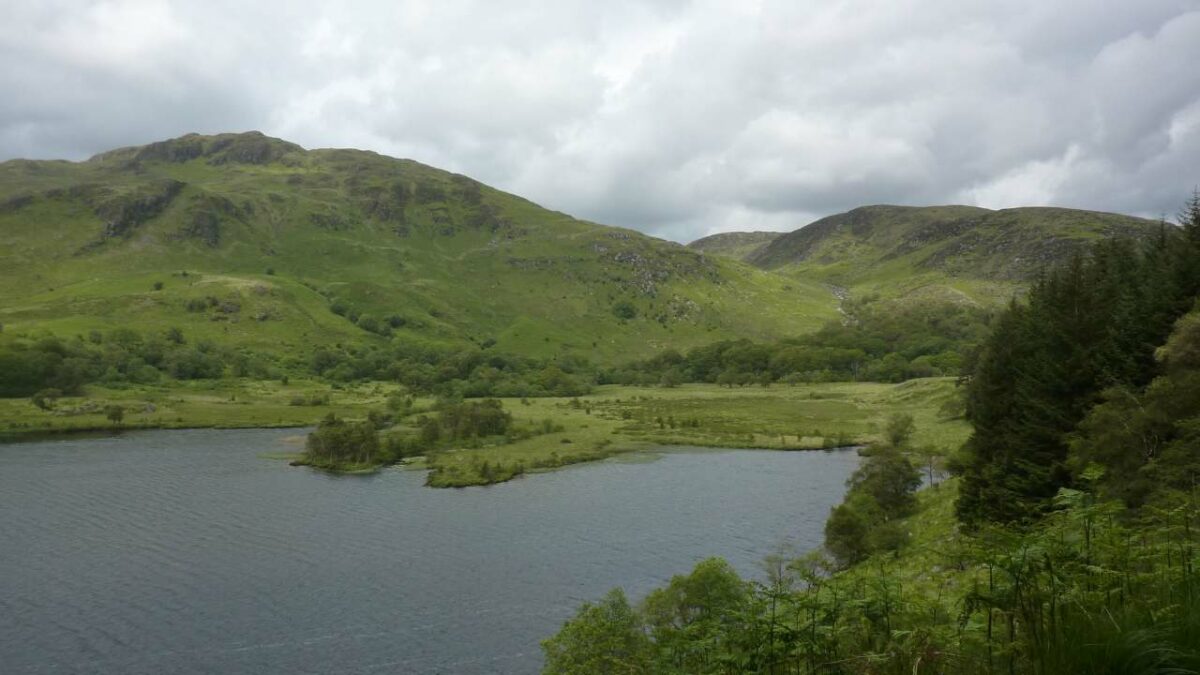
The narrow, freshwater Loch Trool is an excellent choice for history-loving wild campers. The lake is the site of the 1307 battle in which the king of Scots, Robert Bruce, defeated the English by ambushing them. A large, carved stone north of the lake commemorates the battle.
The two car parks near the rock are Bruce’s Stone Car Park and Upper Bruce’s Stone Car Park. Both provide ample vehicle space and are easy to access from the road parallel to the lake’s northern shore. Once you leave your vehicle at either of the car parks, you can descend to the loch and find a suitable camping spot.
The lake itself is one of the most scenic in Dumfries and Galloway. It is surrounded by rolling, forested hills and features beautiful blue water – in other words, it’s as photogenic and picturesque as a Scottish loch can get.
It’s also worth mentioning that you can swim as far up Loch Trool as you please; and that there are many hiking opportunities in its immediate surroundings. Explore the area around the lake: you’ll pass lots of small waterfalls and burns and enjoy some genuinely incredible vistas.
Loch Dee
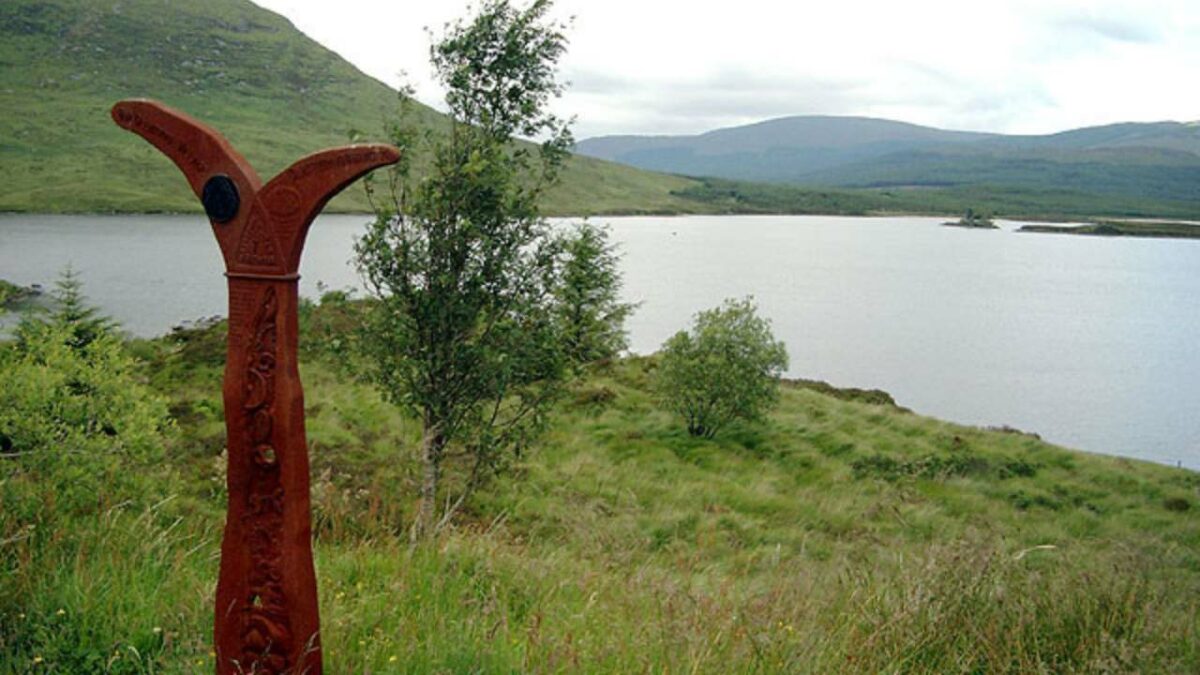
We move from northern to central Galloway Forest Park and one of its most charming lakes – Loch Dee. The easiest way to get here is from the south, as a road runs parallel to the lake’s southern shore. Those walking here from the north should relatively easily traverse the hilly region to the northwest of the lake or the forested area to its northeast. However, you can also approach Loch Dee from other directions on foot.
The spot marked on the map is a small beach with fine sand and excellent views – it’s the best option for anyone looking to wild camp at Loch Dee. Still, there are many other gorgeous spots everywhere around the lake too.
If you plan to come here in a motorhome, you’ll want to camp somewhere closer to the road on the lake’s southern shore. I recommend the tiny peninsula at the end of the path, which connects to the road parallel to the south coast of Loch Dee.
Besides its relative remoteness – which most wild campers will see as an advantage anyway – the only other “bad” thing about Loch Dee is that it’s particularly rampant with midges. I should also point out that those who get tired of their tents and vans can stay at White Laggan Bothy, just south of the lake.
Burleywhag and Kettleton Byre Bothies
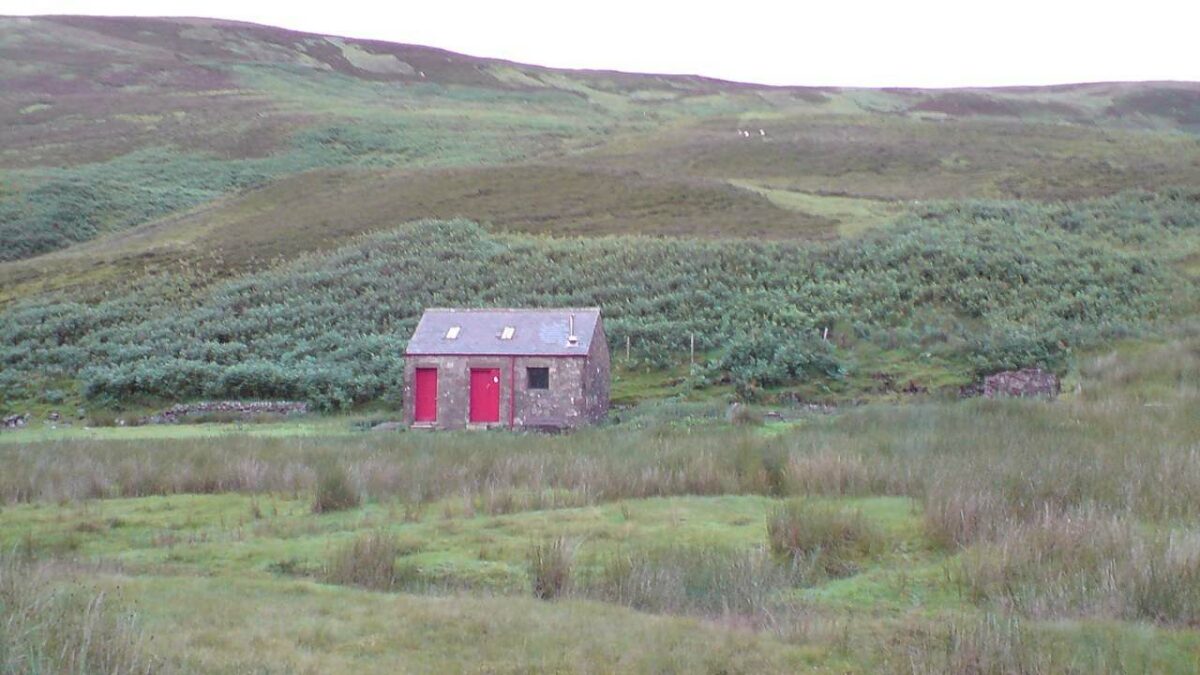
Next are two comfortable bothies in northeast Dumfries, in the peaceful wilderness between Thornhill and Moffat. Both are managed by MBA (Mountain Bothies Association) but have different owners: Queensberry Estate (Burleywhag) and Buccleuch Estates (Kettleton Byre).
The Kettleton Byre Bothy is more accessible since it’s only six miles northwest of Thornhill. It’s a small but very welcoming building whose bright red doors can be seen from afar. Those planning to stay here can use the bothy’s wood-burning stove but are also expected to keep their dogs under strict control.
Although situated further in the wild than Kettleton Byre, the Byrleywhag Bothy is even cosier. It is located next to a sheep pen, features a wood-burning stove, and its walls are full of photos of bygone days that give the bothy a nostalgic feel. The bothy’s location is stunning – majestic, rolling hills surround it on all four sides.
The two bothies are best visited on a longer wild camping trip through the wilderness between Thornhill and Moffat. While you’ll definitely have to deal with some bogginess with traversing the area, you will also encounter many magnificent glens, waterfalls, burns, and ruined estate houses begging to be explored.
Wigtown Harbour
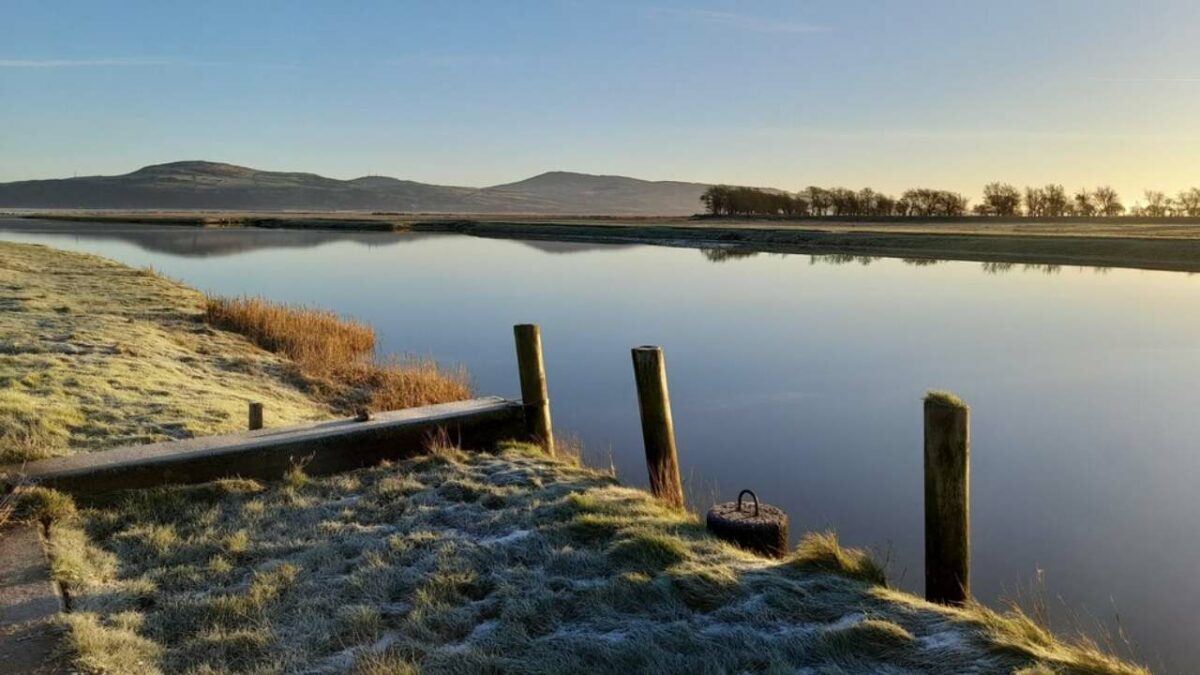
Often called “Scotland’s forgotten corner”, the Rhins of Galloway peninsula in the far west of Dumfries provides a wealth of wild camping opportunities. Out of all the great camping spots in this region, I’ll focus on the one that’s a bit further west, across Luce Bay and Burrowhead – the harbour of Wigtown.
To reach this place, head southeast from the town’s centre via Harbour Road until you reach River Bladnoch. There, you will find a sizeable car park on the left – where you can leave your vehicle – and a grass section to the right – where you can pitch your tent.
The field is owned by a town resident who does not charge campers for staying on his property. It’s a tranquil place with a few picnic tables, an excellent view of the river and the countryside behind it, and a pathway parallel to the river you can stroll on.
While staying here, make sure to take some time to explore the town as well. As Scotland’s National Book Town, Wigtown is the perfect destination for campers who love reading – you could easily spend a whole day here book shopping, antique shopping, and relaxing in numerous cafes with delicious snacks.
Mull of Galloway Spit
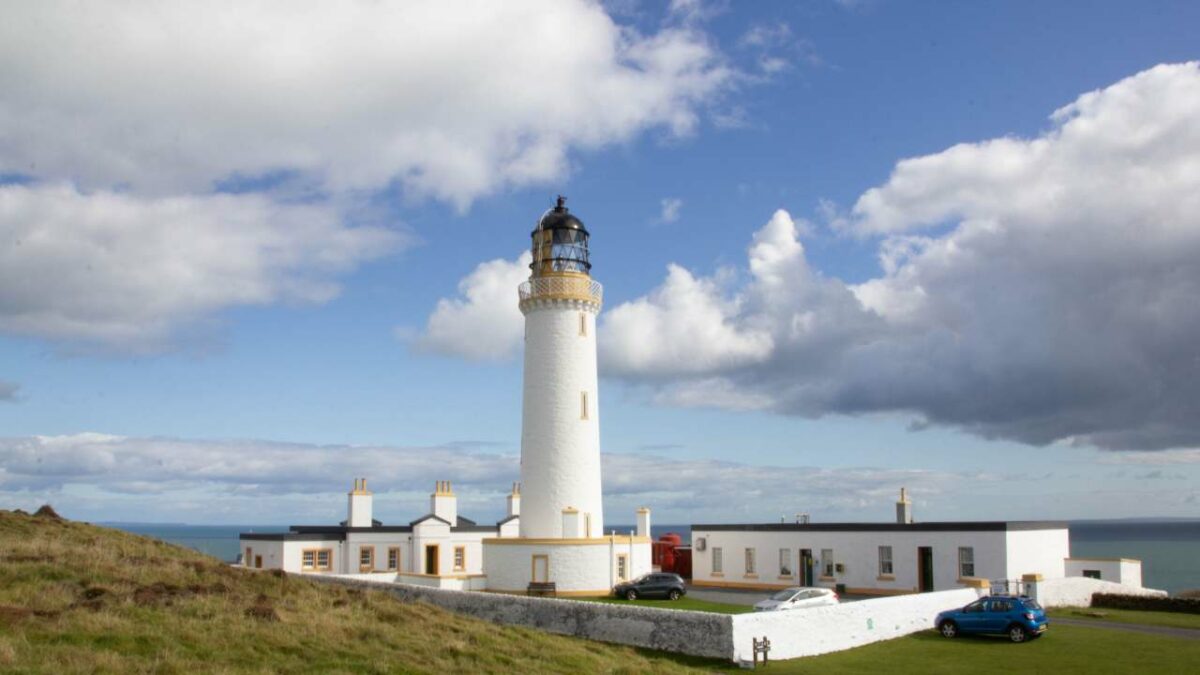
Unlike the wild camping spot described above, this one actually is on the Rhins of Galloway peninsula, more precisely on its southernmost point – Mull of Galloway. This is also the southernmost point of Scotland and provides its visitors with truly unforgettable seaside views.
The wild camping spot on the map is just north of the Mull of Galloway Lighthouse, built in 1830 and still in use (although automatised). It’s a tranquil off-grid place with a small beach and ample space for RVs and tents. Open fires are allowed, but there are no facilities of any type (not that wild campers need those anyway).
One of the most important things to say about camping at this place is that it’s not free. The owner of the property – a friendly farmer – comes and collects £2 per person. People who camped here alone, say that the farmer doesn’t bother to come and collect the money if there’s just one person camping. You can also stay on the other side of the peninsula – opposite the beach mentioned above – although this area can be a bit doggy for bigger RVs. If you are looking for beaches that are easier to access with an RV, check out our list of wild beach campgrounds in Scotland.
While staying here, stop by the lighthouse: its outhouse has been rebuilt into a visitor centre. The nearby Gallie Craig Coffee House and the quaint little hamlet of Damnaglaur (three miles north) are also worth visiting.
Glencaple Jetty
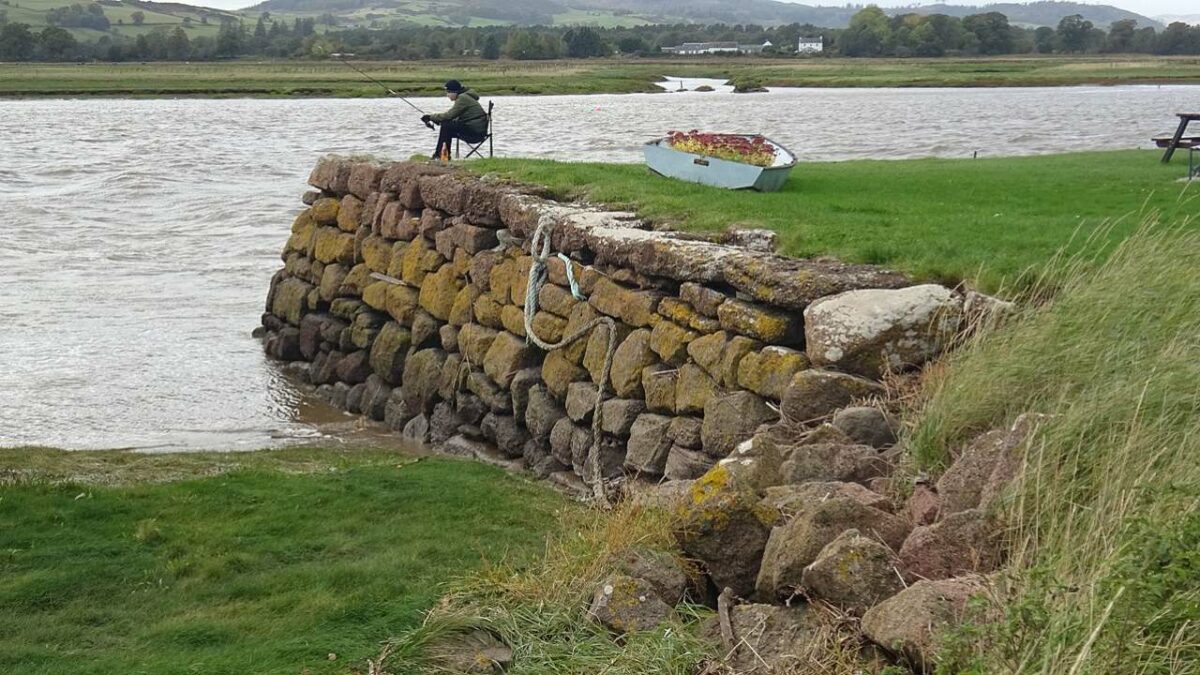
The next Dumfries wild camping destination is located only 5 miles south of the town of Dumfries, in the quaint riverside settlement of Glencaple. While it’s not as “wild” as some of the spots described above, this is still an excellent place to spend a night and enjoy the views to die for.
Here, you will want to stay at the settlement’s old jetty between River Nith and B725 (Shore Road). It’s an ideal option for folks exploring Dumfries in their motorhomes and who want to take a break from the “true” wilderness by staying at a place that’s only yards away from shops, pubs, and backup sleeping options like motels and motels (in this case, the historic Nith Hotel is the best choice).
While camping at the jetty, put a few quids into the honesty box. There is no charge for overnight parking on the gravel at the end of the quay, so the donations help maintain the area around the settlement’s harbour. The box is close to the boathouse (opened by Princess Alexandra in 2012).
It’s also worth noting that the jetty is a great spot for wild campers interested in birdwatching. The mud exposed at low tide attracts many waders, skylarks, and wildfowl. Finally, nearby attractions worth visiting include Wildfowl and Wetlands Trust Visitor Centre (5 miles south), Caerlaverock Castle (3 miles south), and Caerlaverock National Nature Reserve (2 miles south).
Carsethorn
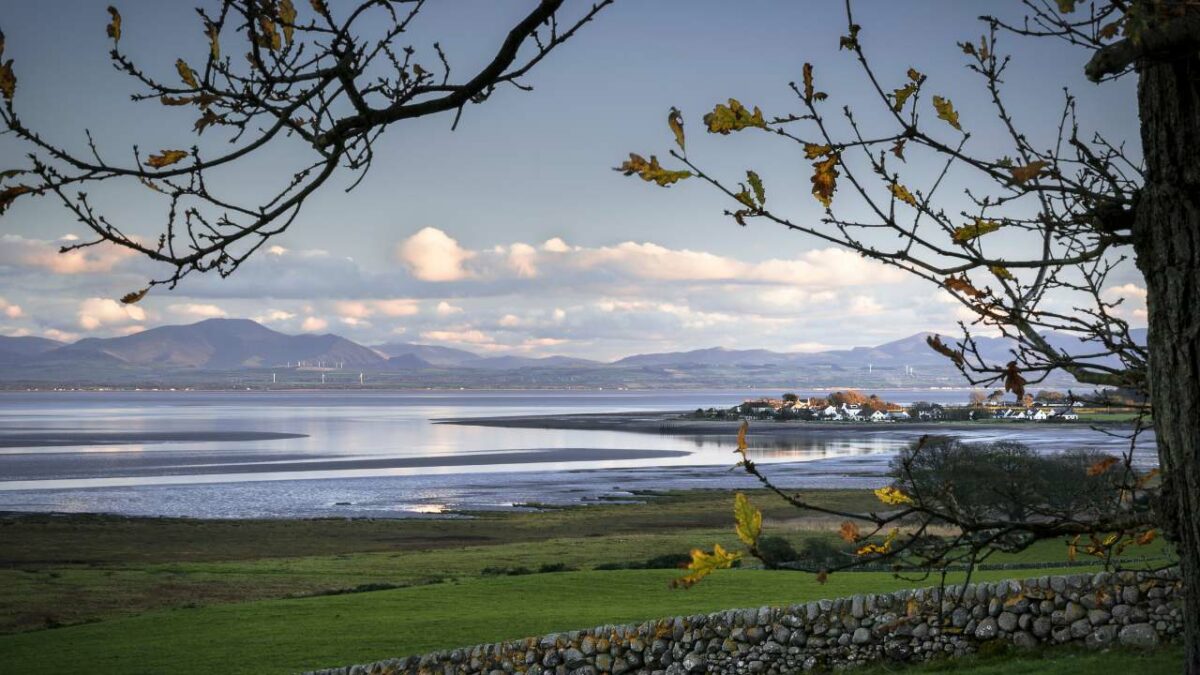
The coast of Eastern Dumfries provides some of the best views in the whole council area. To enjoy these views as a wild camper, you’ll want to head south of Dumfries town to a small residential hamlet at River Nith’s mouth called Carsethorn.
Serving as a port for Dumfries some 500 years ago, Carsethorn is now a clean, peaceful, and well-kept village with an absolutely stunning shorefront. One of the best places to leave your car here is Carsethorn Car Park, just across from the lovely-looking pub called the Steamboat Inn. Unfortunately, overnight parking is not allowed – for that, you’ll want to head a bit further north from the hamlet.
Five minutes up the road from Carsethorn is Drumburn Viewpoint. There is a small parking lot here, with a small grassy area hidden by a high hedge – an ideal wild camping spot. The viewpoint looks towards where the Nith River meets the Solway Firth. If the weather is clear, you should be able to see all the way to Buttermere in the Lake District.
The attractions worth visiting are the beautiful Southerness Beach and its lighthouse (5 miles south) and, like in the case of Glencaple, the ancient Caerlaverock Castle (on the other side of the Nith Estuary).
Dundrennan Abbey
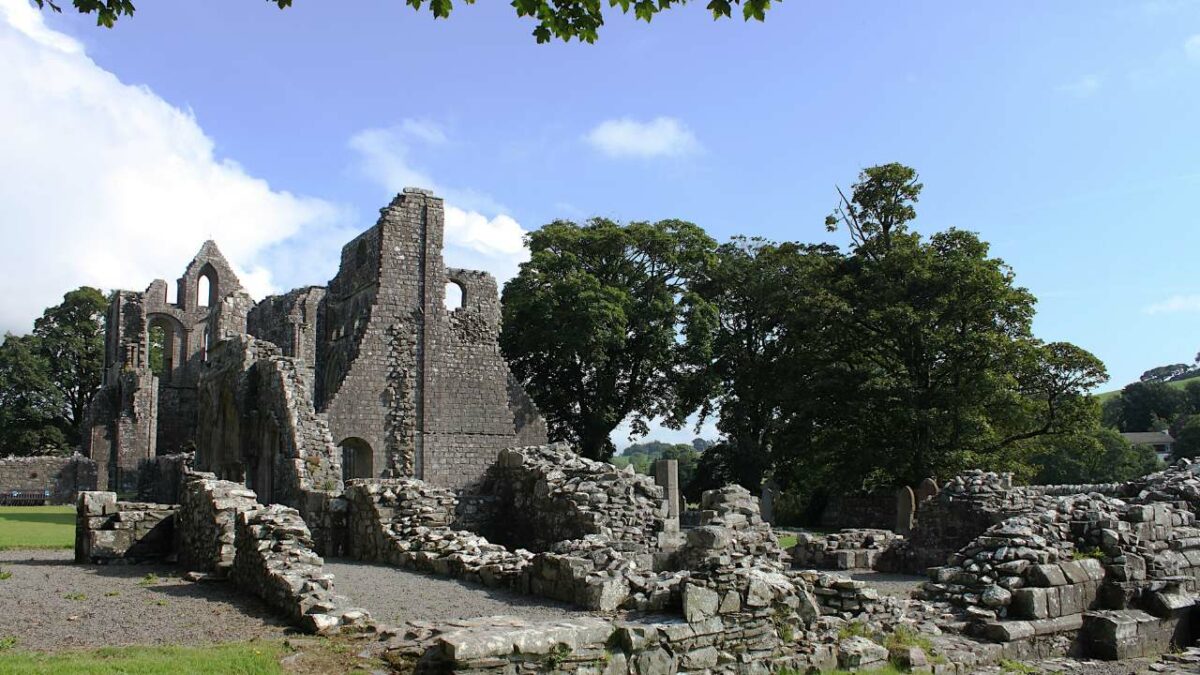
The last wild camping location on my list is in south-central Dumfries, in the village of Dundrennan, 5 miles east of Kirkcudbright. The most notable feature of this particular spot is that it’s situated next to the ruins of a 12th-century Cistercian monastery – Dunedrennan Abbey.
Although somewhat sloping, the gravel hardstanding parking lot beside the abbey is spacious and can easily accommodate several campervans and motorhomes at once. You can stay here free of charge, which makes the Dundrennan Abbey Car Park one of the best overnight stops in this part of Dumfries.
You won’t, however, be able to explore the ruins of the church: it is only partially open as it’s currently under maintenance. As for the village, there’s a shop where you can stock up on supplies and a B&B where you can spend the night in case you ever feel like sleeping in a real bed.
Dundrennan is only two miles from the sea and can serve as an excellent base for exploring the coastline of south-central Dumfries. I recommend visiting Mullock Bay Beach: it’s less than five miles southwest of the village and provides phenomenal views of Solway Firth.
For more awesome campsites, see our Isle of Skye wild camping guide.
What to Pack for Wild Camping in Dumfries & Galloway Park?

While all wild campers have their own preferences, this list is a good place to start:
- Large, comfortable backpack
- Comfortable, warm sleeping bag and liner
- Lightweight and easy-to-pitch tent
- Waterproof clothes, including trousers and a jacket
- Quick-drying lightweight clothes
- Flip-flops for around-the-camp use
- Comfortable trekking boots and socks
- Large water bottle and filtration system
- Trowel for burying waste
- Biodegradable toiletries, toilet paper, and hand sanitiser
- Head net and midge repellent
- Camping stove, gas, and matches
- A sufficient amount of food and some walking snacks
- Plate, mug, and lightweight cutlery
- Bags for carrying out litter and a few drybags
- Ordnance Survey map(s)
- First aid kit, compass, and a headtorch
While this looks like a lot of items, all of them are vital; that is precisely why every wild camper needs to invest in lightweight, high-quality gear and learn to pack smart.
Where to Next?
The southwest of Scotland certainly has a lot to offer, but so does almost every other region of this breathtaking country.
Perhaps the most beautiful – and undoubtedly the most famous – Scottish wilderness area is the Loch Lomond and The Trossachs National Park. Check out my list of the best wild campgrounds at Loch Lomond and learn more about the park’s most scenic camping locations.

I love hiking, backpacking, and camping. From the Camino de Santiago to the West Highland Way in Scotland or simply a great day hike on the weekend. Hiking refreshes me, my mind, and keeps my body reasonably fit. So far I have walked three Camino routes and many other long distance hikes in the UK, Canada, and around the rest of Europe. One of the best was my hike up Ben Nevis.

